Exploring the Universe of Shield Hero: An In-Depth Analysis
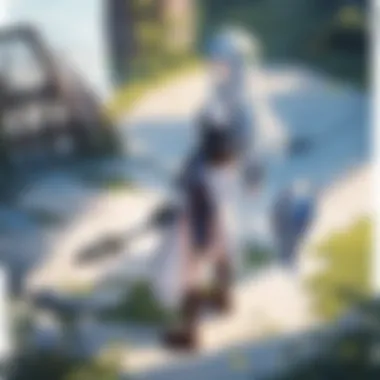
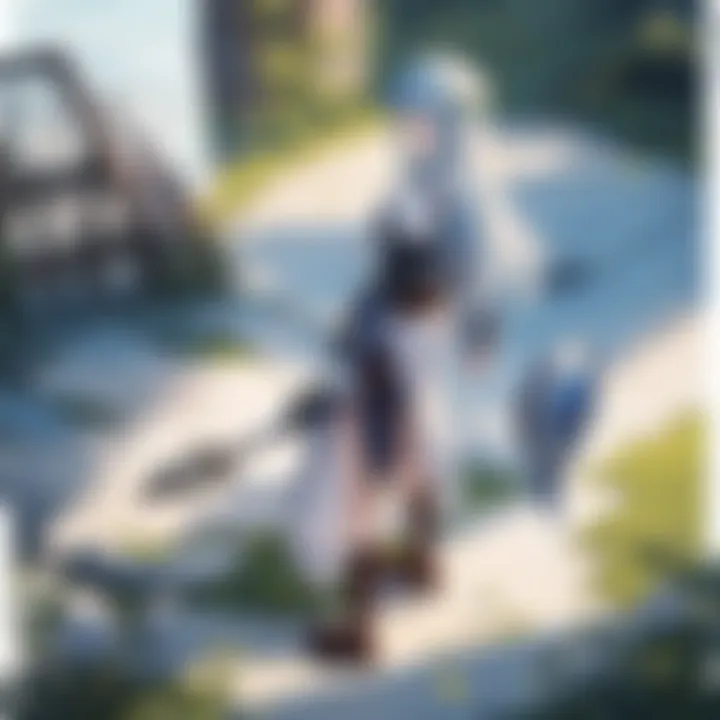
Intro
The world of "Shield Hero" captivates viewers with its unique blend of adventure, moral dilemmas, and rich character arcs. This analysis delves into the intricate world crafted by the creators of the series. We explore the narrative structure, character dynamics, and thematic elements, as well as how these aspects resonate with audiences. Furthermore, the cultural significance of "Shield Hero" within the anime and manga landscapes is highlighted. This discussion aims to provide a comprehensive understanding of why this series stands out in modern Japanese media.
Character Profiles
Overview of Main Characters
At the core of "Shield Hero" are its main characters, whose development drives the narrative. The protagonist, Naofumi Iwatani, stands out due to his journey from a naive hero to a hardened survivor. Initially appointed as the Shield Hero, Naofumi faces betrayal early on, shaping his worldview and interactions. His growth is marked by an evolution in his moral compass, revealing complexity and depth.
Raphtalia is another pivotal character. As a demi-human with a tragic backstory, she symbolizes resilience. Her bond with Naofumi grows from one of servitude to mutual respect, reflecting themes of loyalty and personal growth. Their relationship adds emotional weight to the story, showcasing how trust can be rebuilt in the face of adversity.
Filo, a whimsical yet powerful companion, brings levity to the series. She represents innocence in a harsh world and serves as a reminder of Naofumi's journey to find joy amidst struggle. Each character offers unique perspectives, contributing to layered storytelling that invites further examination.
Supporting Characters
Supporting characters like Myne Melromarc and Motoyasu Kitamura serve as antagonists, shaping the protagonist's journey. Their actions compel Naofumi to confront societal prejudices and personal betrayal. The layered depiction of characters, whether friend or foe, adds depth to viewers' understanding of morality within the story.
The inclusion of characters like The Pope and various heroes expands the narrative scope. Each character not only impacts the plot but also reflects broader societal themes, such as discrimination and power dynamics.
Theme Exploration
Central Themes
"Shield Hero" embarks on several thematic explorations, dissecting concepts of betrayal, trust, and redemption. Naofumi's experiences force audiences to engage with the darker sides of heroism and the complexities of human interaction. The theme of resilience emerges, evident in both Naofumi's journey and Raphtalia's growth. The show invites viewers to ask how one can rise from adversity and rebuild trust.
Cultural References
The cultural context of "Shield Hero" cannot be overlooked. Reference to Japanese social issues, especially concerning discrimination and societal roles, enhances the narrative. Viewers discern reflections of contemporary issues mirrored through the lens of fantasy. For instance, the character of Naofumi challenges traditional hero archetypes, pushing against the grain of societal expectations in Japan.
Epilogue
In examining "Shield Hero," it becomes clear that its narrative brilliance lies in multifaceted character portrayals and profound themes. As a work of modern Japanese media, it stands out due to its willingness to confront uncomfortable questions. By dissecting the complexities of its characters and themes, this analysis highlights the significant cultural implications that resonate with viewers globally.
"In the world of Shield Hero, every character has a story that is as intricate as the underlying themes of trust and resilience."
As this analysis unfolds, it seeks to provide both casual viewers and seasoned enthusiasts with an in-depth understanding of what makes "Shield Hero" not just a narrative, but a cultural conversation worth engaging.
Preface to Shield Hero
The world of anime and manga has seen various narratives that captivate audiences, but few have stirred as much conversation as Shield Hero. This section provides an essential foundation for understanding the intricate themes, character dynamics, and cultural contexts embedded within the series. By exploring the origins, plot, and prevalent motifs that distinguish Shield Hero, readers gain valuable insights into why this work has resonated on both local and global scales.
Origins and Development
Shield Hero began as a web novel written by Aneko Yusagi, gaining popularity that led to its transformation into a light novel series and finally an anime adaptation. This journey illustrates the organic growth of storytelling in digital formats. The series addresses common tropes found in the isekai genre, where characters are transported to parallel worlds, often with unique powers. However, Shield Hero differentiates itself through its character-driven plot and moral ambiguity, challenging the reader’s expectations from the outset.
This evolution has allowed Shield Hero to adapt to the changing tastes of fans around the world. The blend of traditional fantasy elements with modern social issues reflects broader trends within Japanese storytelling, making it relevant to current audiences.
Plot Overview
The plot of Shield Hero centers on Naofumi Iwatani, an avid gamer who is summoned to a fantasy realm along with three other individuals. He is tasked with defending this world as the Shield Hero. However, Naofumi quickly faces betrayal, leading him to become a more cynical and distrustful character. This pivotal moment sets the stage for an exploration of themes such as redemption and resilience.
The narrative unfolds as Naofumi navigates through his new reality, forming alliances, particularly with Raphtalia and Filo, two companions who enrich his journey. The plot is not a mere sequence of battles against monsters; it delves into character relationships, the development of trust, and the significance of camaraderie against insurmountable odds. As Naofumi transforms from a naive hero to a complex figure, the story presents moral dilemmas that are central to its core.
Themes and Motifs
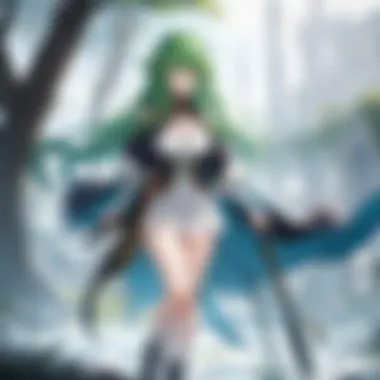
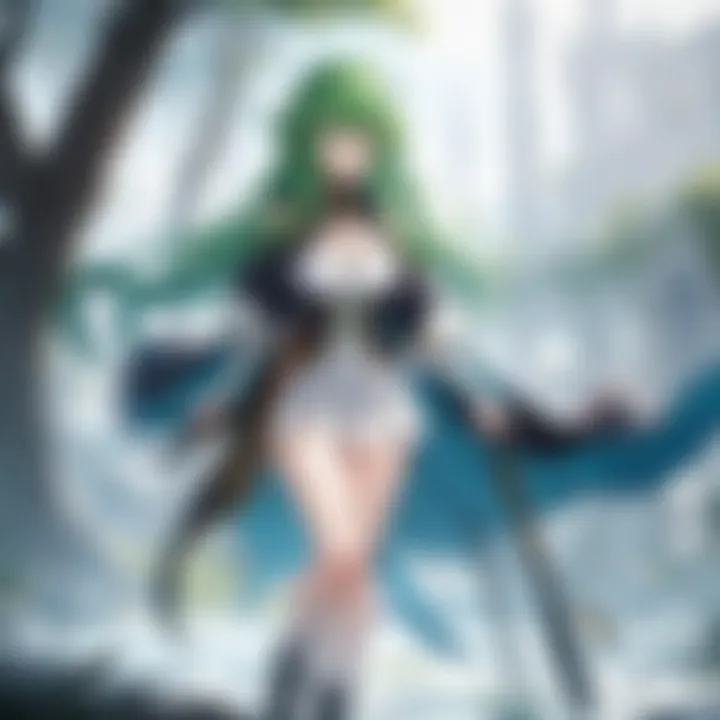
Shield Hero weaves several themes into its narrative, enhancing the richness of its tale. Some prominent themes include:
- Betrayal and Redemption: Naofumi's initial betrayal shapes his character and actions. His quest for redemption drives much of the story.
- Trust and Relationships: The evolving bonds between characters highlight the importance of trust in overcoming adversity.
- Power Dynamics: As Naofumi adapts to his role, the series explores power not just as strength but as influence and responsibility.
These motifs provide depth, inviting analytical discourse among fans and scholars alike. The series poses essential questions about morality and justice, urging viewers to reflect on their interpretations of heroism.
"The true test of a hero is not just in their power, but in how they rise above betrayal and forge connections that will withstand the trials of a chaotic world."
In summary, the introduction to Shield Hero is essential as it sets the stage for analyzing character progression, narrative intricacies, and social reflections within the anime and manga disciplines.
Main Characters
In 'Shield Hero', characters serve as the cornerstone of the narrative. By exploring their multifaceted personalities, motivations, and growth trajectories, we gain insights into the undercurrents of the story. The prominence of characters like Naofumi and Raphtalia facilitates deeper exploration of themes related to trust, betrayal, and resilience. Each character presents unique attributes that not only drive the plot but also resonate with audience experiences. Through their interactions and development, the series highlights moral complexities and social dynamics, making the character arc a focal point for both analysis and appreciation.
Naofumi Iwatani: The Shield Hero
Naofumi Iwatani embodies the essence of the 'Shield Hero'. Initially introduced as a passive individual, his evolution into a hardened and distrustful hero is significant. Betrayed by those he trusted, Naofumi's journey traverses despair and isolation, showcasing his struggle against societal views.
His personality develops from naive optimism to pragmatic determination. As he reluctantly embraces his role as the Shield Hero, he learns to wield not just his shield, but also his cunning and strategy. Through various challenges, he becomes more resilient, displaying growth that parallels his understanding of the world around him.
Naofumi's challenges mirror broader themes in the series, such as prejudice and redemption. His resourcefulness in combat and thoughtful leadership reflect a complex character, one who is engaging and representative of the struggles faced in adversity.
Raphtalia: A Companion's Journey
Raphtalia serves as a critical character in both Naofumi's story and the wider narrative. Initially a victim of circumstances, she evolves into an empowered ally. Her journey highlights themes of recovery and agency.
Having been rescued by Naofumi, she transcends her past trauma. Her skills as a warrior improve significantly under his mentorship, showcasing her determination to protect what she holds dear. Raphtalia's personal growth intertwines with her loyalty to Naofumi, reflecting their deepening bond. As she learns to fight with purpose, she also gains her own identity beyond her initial victimhood.
This shift in Raphtalia’s character is notable, as it emphasizes the importance of partnerships and trust in the series. Her loyalty becomes a catalyst for Naofumi's own transformation, underscoring how relationships can influence personal development.
Filo: The Unique Familiar
Filo stands apart as the unique familiar in 'Shield Hero'. Her childlike innocence and playful demeanor provide a counterbalance to the more serious tones of the plot. As a Filolial, she possesses abilities such as exceptional speed and strength, which are vital for combat as well as travel.
Filo also contributes to lighter moments in the series, albeit unintentionally. Her bond with Naofumi and Raphtalia reflects themes of companionship and unity. This dynamic enriches the narrative, illustrating how diverse relationships can influence growth and healing. Filo's character brings an element of joy and unpredictability in a world often marked by challenge and strife.
Supporting Characters and Their Roles
The supporting characters in 'Shield Hero' play indispensable roles in shaping the narrative and the main characters' trajectories. Each character adds layers to the storyline, contributing to the moral and ethical dilemmas faced by Naofumi and his companions.
- Myne: The initial antagonist whose betrayal catalyzes Naofumi's transformation. Her character raises questions about trust and manipulation.
- Itsuki and Motoyasu: Fellow heroes who showcase diverse values and perspectives on heroism, which contrasts sharply with Naofumi's experience.
- Melty: As a member of royalty, she brings political complexity into the story, further complicating Naofumi's position in the world.
These supporting characters enrich the world of 'Shield Hero'. They enable the main characters to reflect on their identities and choices, emphasizing the interconnectedness of their stories. Each interaction builds on the larger narrative, enhancing our understanding of themes like friendship, betrayal, and forgiveness.
Their presence not only serves as a backdrop but also as essential catalysts for change, driving the overarching narrative forward.
Narrative Structure
The narrative structure of a story is a crucial framework that dictates how events unfold, characters develop, and themes emerge. In the context of "Shield Hero," this structure is essential in guiding the audience through an experience that is both engaging and insightful. Each story arc builds upon the previous one, creating a cohesive tapestry of interrelated episodes. Moreover, understanding this structure helps to illuminate the central motifs and emotional undercurrents that resonate throughout the series.
Story Arcs and Progression
Story arcs in "Shield Hero" serve as the backbone of the narrative, clearly defining challenges and developments faced by the characters. Each arc typically introduces new conflicts, rivals, or allies, while also pushing Naofumi closer to his ultimate goals. For example, the transition from Naofumi's tragic betrayal to his rise as a capable hero illustrates a powerful journey that captivates viewers.
The progression within these arcs allows for rich character evolution and thematic exploration. Key moments often come during the end of each arc, revealing newfound insights or perspectives that challenge the characters. This technique keeps the audience engaged and encourages them to ponder moral complexities.
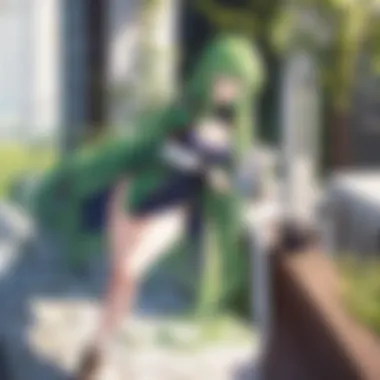
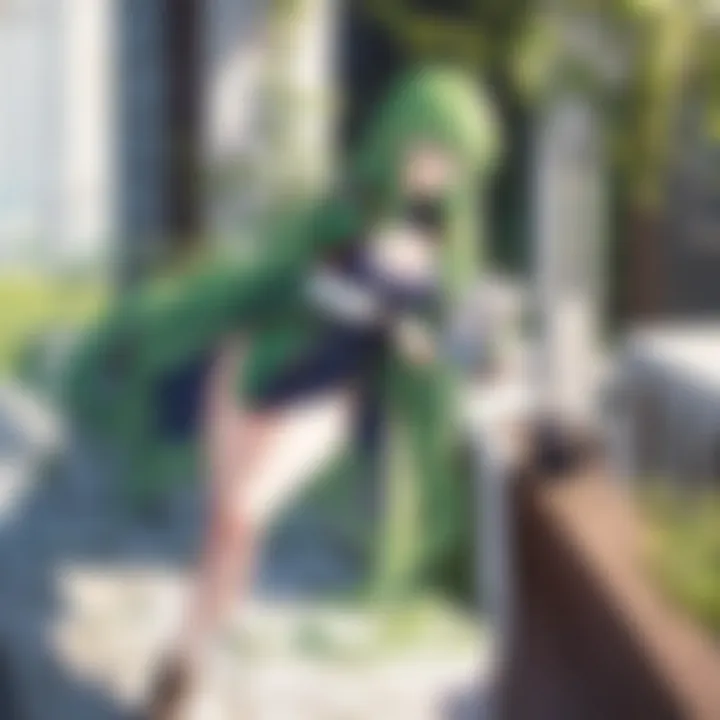
Key Elements of Story Arcs:
- Character Development: Each arc contributes to the growth of the protagonists and their relationships.
- Conflict Introduction: New enemies or dilemmas are introduced strategically.
- Resolution Dynamics: Each arc concludes with a resolution that propels the narrative forward.
The effectiveness of these arcs lies in how they intertwine character motivations and overarching themes, such as trust, redemption, and resilience.
Conflict and Resolution
Conflict drives the narrative and is a fundamental aspect of storytelling in "Shield Hero." The series excels at presenting multifaceted conflicts; they are not just external battles but also internal struggles. Naofumi faces both societal prejudices and personal doubts, which form a rich layer of complexity. These conflicts often reach a peak, demanding resolution that reflects profound character growth.
- External Conflict: This includes battles against monsters or rival heroes that threaten the peace of the world.
- Internal Conflict: Naofumi's struggle with isolation and distrust shapes his journey, showcasing a more profound emotional aspect.
Resolution does not merely mean victory over adversaries. It also encompasses learning and personal evolution. Each resolution often leads to new questions, setting the stage for further exploration. By resolving an arc's conflict, the narrative evolves naturally, emphasizing the importance of perseverance and inner strength.
"Conflict is the heartbeat of story. Without it, there is no narrative to unfold."
Character Development
Character development is a crucial element in any story, and in the case of "Shield Hero," it serves as the backbone of its narrative. This article aims to shed light on the development of key characters, particularly Naofumi Iwatani and Raphtalia, and how their growth enhances the storytelling experience. Understanding character development helps us appreciate the complexities within the plot and the appeal of the series to a diverse audience.
Evolution of Naofumi's Character
Naofumi Iwatani starts as an unsuspecting young man who quickly finds himself thrust into a world of betrayal and hardship. Initially, he is depicted as naive and somewhat carefree. However, as events unfold, especially after the wrongful accusation that leads to his ostracization, Naofumi’s character is forced to evolve under immense pressure. He becomes wary, distrustful, and emotionally closed off, which is a vast departure from his original disposition. This shift is crucial as it highlights the themes of resilience and personal growth amidst adversity.
Through his journey, we see Naofumi embracing his role as the Shield Hero, focusing on defense rather than offense. This defensive mentality symbolizes his development from victimhood to empowerment. He learns to rely on his own skills and seeks strength in his allies, particularly in Raphtalia and Filo. His growth embodies the struggle many face when navigating moral dilemmas, making his journey relatable and engaging.
"The evolution of Naofumi’s character is a poignant reflection of personal struggle and the consequent growth that arises from it."
Raphtalia's Growth and Agency
Raphtalia presents another compelling case of character growth in "Shield Hero." Initially introduced as a slave with a tragic backstory, her evolution throughout the series is remarkable. As she gains freedom and dramatically steps up to fight alongside Naofumi, her character symbolizes hope and tenacity.
With her own struggles and aspirations, Raphtalia transitions from a subordinate role to that of a vital companion with agency. She develops not only as a skilled fighter but also as an independent individual who influences story direction and character choices. The emotional bond that forms between her and Naofumi fosters a sense of partnership, adding depth to their dynamic.
Furthermore, her perspective on fight and survival contrasts with Naofumi's defensive approach. Their partnership showcases the balance between varying ideologies in facing challenges. As Raphtalia advances, her sentiments about her past and struggles are articulated more clearly, presenting her as a complex character rather than a mere supporting role. This development resonates with audiences, demonstrating resilience in overcoming historical burdens and establishing one’s identity.
Cultural Significance
The cultural significance of Shield Hero extends beyond its narrative and characters. It encapsulates trends, ideologies, and reflections of contemporary Japanese society. Its themes resonate with audiences, raising questions about morality, power dynamics, and the nature of heroism. This section will explore these aspects, shedding light on how Shield Hero mirrors and influences the culture of its time.
Reflections on Japanese Society
Shield Hero serves as a lens to view various societal issues within Japan. The protagonist, Naofumi Iwatani, faces betrayal and isolation, reflecting the challenges of trust and loyalty in personal relationships. This creates a commentary on societal expectations and the realities of interpersonal connections. In a society where success is often measured by conformity, Naofumi’s struggle emphasizes the virtues of resilience and growth despite adverse circumstances.
Moreover, the dynamics of power in Shield Hero highlight systemic issues. Naofumi's initial position as a hero is quickly subverted, challenging viewers to reconsider traditional hero narratives. This situation reflects a growing awareness in Japan regarding social hierarchies and the fragility of one's status. The portrayal of relationships, where betrayal can stem from societal pressures, opens discussions about mental health and the importance of support systems in combating loneliness and anxiety.
"The complexities portrayed in Shield Hero provide an authentic view of trust and betrayal, challenging the conventional hero's journey and mirroring societal struggles."
Global Reception and Impact
The global reception of Shield Hero has been varied, stirring conversations around its themes and character arcs. Critics and fans alike have debated its approach to sensitive topics, including trauma and revenge. The storytelling has garnered both admiration for its depth and criticism for perceived missteps. Such discussions indicate the series’ impact on international audiences, who connect with its intricate emotional landscape.
Fans often cite Shield Hero as a significant entry in the isekai genre, differentiating it from peers like Sword Art Online or Re:Zero. The show’s approach to character development and moral dilemmas resonates well with viewers seeking narratives beyond simple escapism. Its themes of redemption and forgiveness reflect broader human experiences, captivating a worldwide fanbase.
The impact of Shield Hero is further evidenced by the active discussions on platforms like Reddit, where communities analyze character motivations and plot developments. This engagement signifies how deeply the series has penetrated global pop culture, encouraging viewers to think critically about the content they consume.
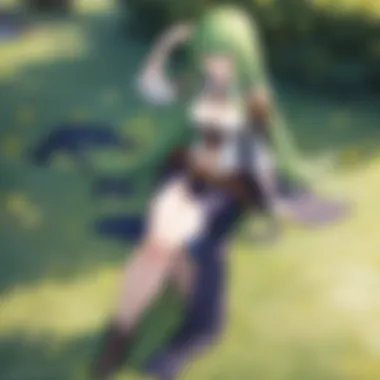
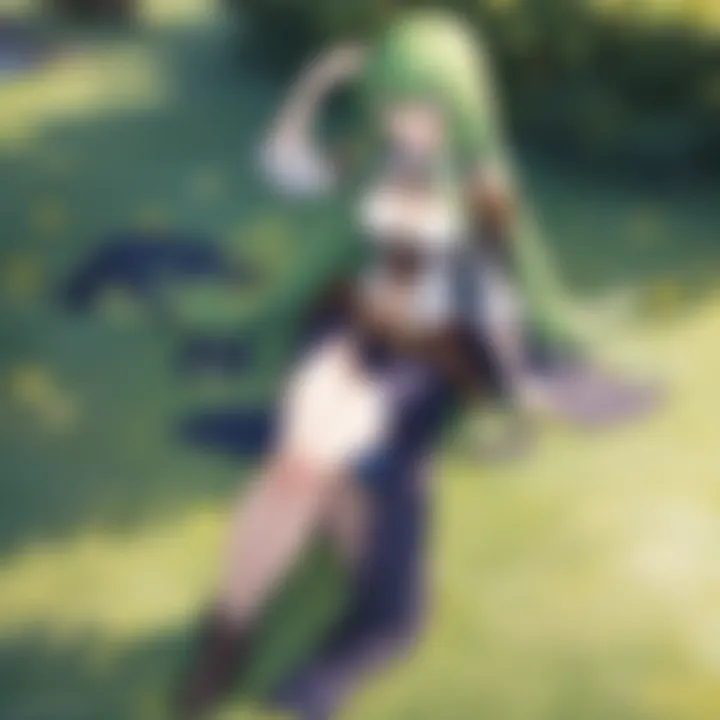
Critical Reception
The critical reception of Shield Hero plays an integral role in understanding its place in the anime and manga landscape. Reviews and opinions provide insight into the series' strengths and weaknesses, allowing audiences to grasp its cultural and social implications. This section examines the specific elements that contribute to the reception of the show, including thematic exploration, animation quality, and character development. Analyzing critical feedback exposes how the narrative's moral complexities resonate with viewers, often prompting discussions well beyond mere entertainment.
Analyzing Reviews and Opinions
Critics have consistently highlighted the depth of the series, often praising the way it deals with complex themes like betrayal, redemption, and societal expectations. The portrayal of Naofumi Iwatani's struggle resonates with many, as it reflects real-world issues of trust and resilience. Reviews commonly emphasize:
- Narrative Complexity: The progression from an innocent hero to a jaded character in a world fraught with deception.
- Character Depth: Focus on Naofumi and his companions, showcasing strong character arcs that align with viewers' emotions.
- Visual Appeal: High-quality animation which adds depth to the storytelling.
However, not all critiques are positive. Some reviewers have pointed out pacing issues and moments of perceived insensitivity. This mixed reception offers a more nuanced perspective on how Shield Hero navigates its thematic landscape, prompting ongoing debates in both professional and fan reviews.
Fan Responses and Community Discussions
The fan response to Shield Hero has been remarkably diverse, reflecting a range of emotions and interpretations. Many fans appreciate the series for its unique take on the isekai genre, often expressing their thoughts through various platforms such as Reddit and Facebook. Key aspects of fan discussions include:
- Character Relationships: The dynamics between Naofumi, Raphtalia, and Filo have sparked numerous discussions on loyalty, companionship, and growth.
- Moral Ambiguities: Fans often engage in debates about the ethical implications present in the story. Some argue that the hero's journey reflects a darker interpretation of the classic hero archetype.
- Cultural Context: Discussions often touch on how Japanese societal norms and values are portrayed, leading to contrasting opinions about the authenticity of the depiction.
"The emotional journey of Naofumi isn't just entertainment; it mirrors our struggles in trust and loyalty."
Through these conversations, fans continue to dissect the various layers of the series, helping cultivate a meaningful community of enthusiasts. Thus, the critical reception invites viewers to not just consume the content but engage with it on multiple levels.
Comparative Analysis
The comparative analysis section holds significant weight in understanding the broader implications of Shield Hero within the isekai genre. It provides an opportunity to measure Shield Hero against its contemporaries, identifying unique elements that contribute to its popularity and cultural significance. This type of analysis enriches the reader's understanding of how the series fits into the larger anime and manga narrative.
By comparing Shield Hero with other notable isekai titles, we uncover the nuances in storytelling, character development, and thematic depth. The examination reveals how the series diverges from or adheres to established tropes found within the genre. Furthermore, studying these contrasts helps highlight the innovative aspects of Shield Hero, which may attract audience members seeking new perspectives.
The factors to consider in this comparative analysis include:
- Storytelling Techniques: How narratives are constructed and presented across titles.
- Character Archetypes: The evolution of characters and their roles in various series.
- World-Building: The depth and realism of the fictional worlds created.
- Thematic Exploration: Common themes across isekai and how Shield Hero challenges or complements them.
"Understanding the comparative landscape enhances the appreciation of Shield Hero, revealing its impact and the dialogues it fosters within anime culture."
Shield Hero vs. Other Isekai Titles
In the realm of isekai, Shield Hero stands out due to its specific approach to character dynamics and moral complexity. Comparing it with titles like Sword Art Online, Re:Zero, and No Game No Life, we notice various distinctions.
- Protagonist's Journey: Unlike Sword Art Online, where the main character is often seen as a quintessential hero, Naofumi Iwatani begins as an outcast. His transformation is both gritty and profound.
- Moral Ambiguity: Re:Zero tackles the psychological aspect of death and rebirth, while Shield Hero delves into themes of betrayal and resilience.
- Community Dynamics: No Game No Life focuses on gaming strategies and sibling dynamics, whereas Shield Hero emphasizes companionship and the building of trust.
Such contrasting approaches not only inform our understanding of Shield Hero but also reflect the diverse ways narratives can engage audiences within the same genre. Each title contributes to a conversation about heroism, ethics, and the nature of adventure in a gaming-like reality.
Genre Innovations and Conventions
Shield Hero manages to intersect and innovate several conventions typically found in the isekai genre. Standard tropes, such as the transportation to another world and gaining unique abilities, are present but are used in ways that breathe fresh life into familiar narratives.
- Character Roles: The narrative challenges conventional hero archetypes. Naofumi’s journey is marked by challenges that stray from typical power fantasies.
- Social Commentary: The series incorporates critical reflections on societal issues, such as discrimination and trust, which are not always prevalent in the genre.
- Narrative Structure: The storytelling in Shield Hero often diverges from linear models, favoring a more episodic exploration of themes like trauma and recovery.
By embracing and redefining genre conventions, Shield Hero not only captivates its audience but also encourages fellow creators to explore new avenues within the isekai narrative framework. Through this lens, it becomes clear that Shield Hero serves as both a product of its time and a catalyst for change within its genre.
Finale
The conclusion serves as a vital component in the structure of an analysis on the Shield Hero. It distills the overarching themes and insights explored throughout the article while providing the reader with a closing perspective. In this case, the exploration of the Shield Hero series reveals significant cultural reflections, character complexities, and narrative choices that shape its identity.
The Enduring Legacy of Shield Hero
The legacy of Shield Hero remains impactful within the anime and manga landscapes, influencing both creators and audiences alike. It introduces a fresh perspective on the isekai genre through its nuanced portrayals of morality and redemption. Unlike many titles that embrace traditional hero archetypes, Shield Hero challenges these norms, presenting a protagonist whose struggles reflect real-world prejudices.
"Shield Hero’s popularity can be traced to its unique storytelling capabilities that resonate with contemporary societal discussions."
Moreover, the character arcs, particularly Naofumi's development, inspire thoughtful discussions about trust, vengeance, and growth. The series also garnered attention for its diverse cast, each contributing to the richness of the narrative.
From its beginnings, Shield Hero has managed to cultivate a loyal fan base, sparking conversations across platforms such as Reddit and various social media. Analyzing this legacy allows for a deeper understanding of its role in shaping the future of the isekai genre.





